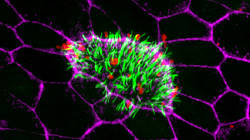Scope
 |
Symbiosis plays a very important role in the origin, organization and evolution of life. We live in a symbiotic world, and one of the key characteristics of the biological systems is to establish associations and connections with other organisms. In this sense, evolutionary changes can be explained by an integrated and synergistic cooperation between organisms resulting in the acquisition of characteristics inherent to the ecosystems where they are established and develop. The wealth of data produced with new sequencing technologies highlights that a complex microbiota constitutes the largest living component of most environments supporting the hypothesis for its key role in symbiogenesis. In this context, the human body is no exception. The microorganisms colonizing the skin, gut, oral cavity, urogenital tract, encoding 100-folds more unique genes than the human genome, participate to many metabolic functions, improve the adsorption of nutrients, guide the maturation of the immune system and protect the host against potentially harmful pathogens. In turn the commensal flora gains access to a nutrient-rich environment and its structure and the composition is intimately correlated with both host genetics and environmental factors. These complex interaction mechanisms indicate that co-evolution has moulded host-microorganism interactions into a symbiotic relationship involving a variety of molecular and cellular mechanisms, through which commensal microbiota suppresses host defense and makes essential contributions to the host. The practical implications of this new approach are enormous, and largely unexplored. Shaping of the human microbiome could be a viable intervention strategy for conditions that have proved untreatable with conventional methods. On the other hand, monitoring the microbial flora could have a potential for early diagnosis of many diseases. Dissecting of the different aspects of the interaction of the microbiota with the host in humans and other model systems is possible only through the interdisciplinary effort of experts from different fields including molecular and cellular biology, microbiology, immunology, computational biology, bioinformatics, genetics, population genetics, and epidemiology. Scope of the meeting is to provide a discussion forum for experts in these different fields to foster new ideas for interdisciplinary research.

